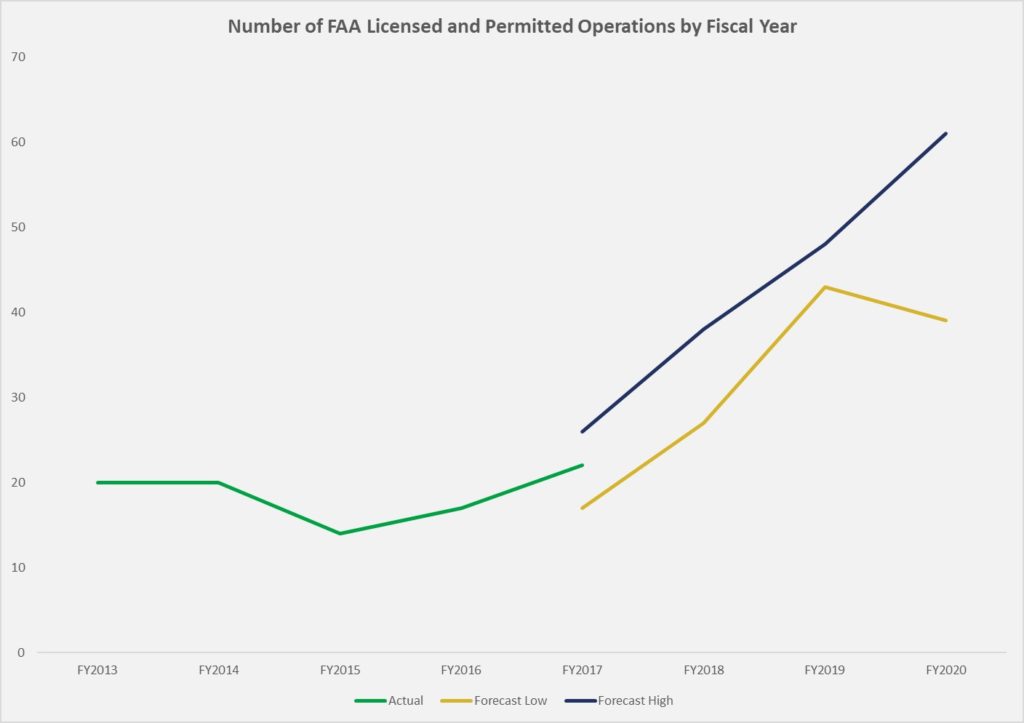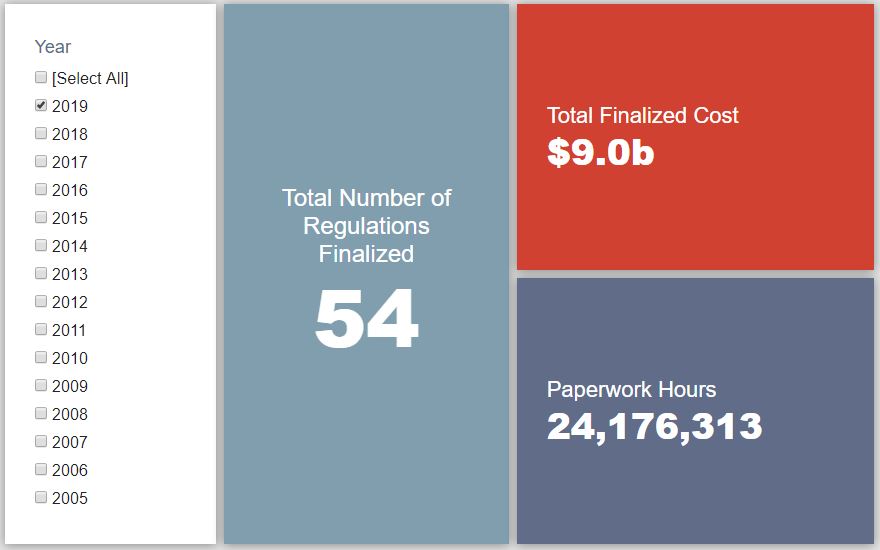Week in Regulation
April 1, 2019
Proposed Rules Highlight the End of March
Overall regulatory costs shot back up this past week, with proposed rules driving much of the trend. Interestingly, the rulemaking with the highest costs and the rulemaking with the highest cost savings were both in the proposed stage. Between both proposed and final rules last week, agencies published $1.4 billion in total net costs and added almost 1.4 million hours of new paperwork.
REGULATORY TOPLINES
- New Proposed Rules: 40
- New Final Rules: 48
- 2019 Total Pages: 12,017
- 2019 Final Rule Costs: $9 Billion
- 2019 Proposed Rule Costs: $5.7 Billion
TRACKING THE REGULATORY BUDGET
While they do not yet affect the fiscal year (FY) 2019 regulatory budget under Executive Order (EO) 13,771, a Food and Drug Administration (FDA) proposal regarding “Mammography Quality Standards Act” led the regulatory side of the ledger while a Department of Labor (DOL) action on “Regular Rate Under the Fair Labor Standards Act” led the deregulatory side. The FDA rulemaking has nearly $1.4 billion (present value, discounted at three percent in perpetuity) in total costs and 1,348,027 hours of new paperwork. This represents the vast majority of all quantified effects from last week. All other rulemakings from last week with estimated burdens or savings combine for net cost savings of approximately $11 million and 5,005 hours-worth of new paperwork. The DOL rulemaking contributed roughly $244 million in total net savings, primarily due to “reduced litigation.”
So far in FY 2019 (which began on October 1, 2018), there have been 37 deregulatory actions (per the rubric created by EO 13,771 and the administration’s subsequent guidance document) against 15 rules that increase costs and fall under the EO’s reach. Combined, these actions yield quantified net costs of roughly $10.1 billion. This total, however, includes the caveat regarding the baseline in the Department of Agriculture’s “National Bioengineered Food Disclosure Standard.” If one considers that rule to be deregulatory, the administration-wide net total is approximately $3.4 billion in net costs. The administration’s cumulative savings goal for FY 2019 is approximately $18 billion.
THIS WEEK’S REGULATORY PICTURE
One can describe “regulatory policy” in many ways: mundane, opaque, monotonous, complex, legalistic. The list goes on. In order to help provide a clearer and more straight-forward view into this world, the American Action Forum will seek to provide a brief illustration of a notable regulatory trend we have identified in a given week. This week’s entry: reducing regulatory burdens to facilitate the expected rise of commercial space flight.

*Reproduced from FAA’s Aerospace Forecast: Fiscal Years 2018-2038 (page 36)
The chart above is the Federal Aviation Administration’s (FAA) current projection of licensed and permitted commercial space flight activities (launches, reentries, or launch sites). The number of activities is expected to increase 2-to-2.5 times by fiscal year (FY) 2020. This projected rise, along with a presidential space directive, led the FAA to release this week the text of a proposed rule that would streamline commercial space flight regulations.
The 580-page proposal aims to make it easier for firms to get their activities greenlit by the FAA. Specifically, the proposed rule would establish a “single set” of licensing requirements as opposed to the current regulations, which have different requirements for expendable launch vehicles and reusable launch vehicles. The proposed rule would also set performance-based standards for firms, giving them the ability to meet a standard already accepted by FAA or to propose an alternative approach. The FAA expects this flexibility will allow the agency to more easily adapt to the needs of commercial space operators as technologies progress.
Though the proposed rule does not yet count towards the administration’s regulatory budget, if finalized in its current form the FAA estimates about $4.6 million in annualized cost savings, plus “unquantified savings and benefits from the proposed rule, since it provides flexibility and scalability through performance-based requirements that would reduce the future cost of innovation and improve the efficiency and productivity of U.S. commercial space transportation.”
TOTAL BURDENS
Since January 1, the federal government has published $14.6 billion in net costs (with $9 billion in finalized costs) and 24.6 million hours of net paperwork burden increases (including roughly 24.2 million hours from final rules). Click here for the latest Reg Rodeo findings.












